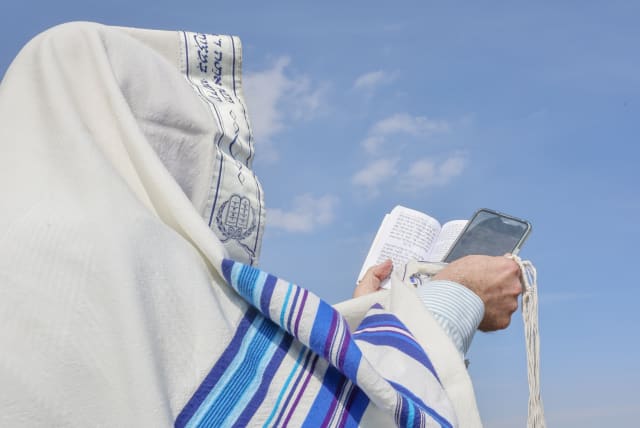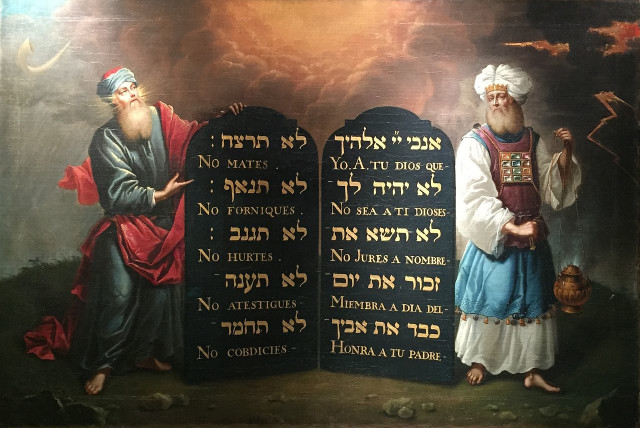What should Jews tremble for this Elul? - opinion

This year we do not need the metaphor of trembling fish to underscore the gravity and solemnity of this period. We have trembled for the past 11 months.
If I am not for myself, who will be for me? But if I am only for myself, what am I? – Hillel
No man is an island, entire of itself; every man is a piece of the continent, a part of the main. – John Donne
On the day of his death, Moses our master delivered a heartfelt soliloquy. He relived both the highs and lows of the 40-year desert journey and also warned of the impending dangers of life in Israel. After issuing repeated cautions, he reiterated the entire body of Torah laws. For this reason, the final section of the Torah is referred to as Mishne Torah, or Moses’ review of the Torah.
Parashat Re’eh marks the transition – from Moses’ recollections of the past to his review of the Torah’s legal code.
Though Moses addressed the entire nation in his speech, he intentionally used a singular verb, “re’eh.” This choice was significant because it directs the list of mitzvot to each individual rather than to the nation as a collective.

In the ensuing sections, Moses listed personal laws, which govern individual lifestyles, and collective national laws, which shape our communal experience. Most Torah sections of Re’eh and Shoftim contain collective laws, whereas the concentrated list of commandments in the section of Ki Tetze primarily addresses individual mitzvot.
Human identity is shaped by both personal and communal experiences. Each person carries the dignity of individuality, with a life story uniquely his own. Yet, we live within larger frameworks which profoundly shape who we are. We belong to families, societies, nations, and historical legacies. Identity and experience are forged by both our personal distinctiveness and our shared collective existence.
This is even truer regarding religious identity. We stand before God as individuals, each commanded to fulfill His will, to strive to understand Him, and to shape ourselves in His image. Yet, we are also part of a larger historical collective – the Jewish people, chosen to represent God in this world. Religious success depends on striking the proper balance between our personal religious journey and our national identity.
By and large, life in Israel feels more collective, whereas religious identity outside of Israel tends to be more individualistic. Living here, where Jewish experience is both organic and holistic, encourages us to think more frequently about Israel’s larger community and, by extension, the Jewish people as a whole. Outside, as it is more challenging to construct a broad national identity, individual religious identity often dominates.
This contrast is vividly illustrated by the differing perspectives of two major Jewish thinkers of the 20th century – Rabbi Joseph Soloveitchik and Rabbi Abraham Isaac Kook.
Rav Soloveitchik delved into the fabric of an individual’s relationship with God, with his seminal works, such as Halakhic Man and The Lonely Man of Faith, focusing on the solitary individual’s role in religious identity. Rav Soloveitchik explored religious man and his profound encounter with the Divine Other.
In contrast, Rav Kook spoke in more collective terms about the larger entity known as Knesset Yisrael, encompassing not only the Jews living at any given time but also the cosmic Jewish people, a nation of Israel spanning the ages. For olim who experienced life outside of Israel, the differences between these frequencies are unmistakable.
Individual vs national religious identity
BALANCING BETWEEN individual and national religious identity is always demanding, but over the next two months it will be particularly intense.
The coming week marks the onset of Elul and the beginning of the High Holy Days season. Designated for personal introspection, moral inventory, religious improvement, and teshuva, they are times for deep soul-searching and heightened religious consciousness.
However, this year these days carry an entirely different weight. We approach the holidays with dread, acutely aware that each step of our journey will be overshadowed by the trauma of Oct. 7. As the holidays unfold, the manifold layers of suffering endured by the Jewish people dominate our thoughts. We can only imagine the mix of emotions we will experience during this year’s Rosh Hashanah and Yom Kippur, wrestling with questions about how God could allow such a tragedy to occur. And, of course, no one can truly anticipate what this year’s Simchat Torah will be like.
Over the past year, our experiences have been profoundly collective and national – just as they should be. We have grappled with the echoes of Oct. 7, searching for faith amid the turmoil. We have mourned national tragedies, weeping with an entire nation viciously attacked in its homeland and assaulted around the world. Together, we have engaged in the heroic efforts to save our land and safeguard Israel’s security.
We have delved into how these events will shape our understanding of Jewish peoplehood and identity. Never have we felt so deeply connected to our Jewish heritage and history. These emotions and reflections have been overwhelmingly collective, resonating with the shared experiences of our nation.
As Elul begins, these emotions and preoccupations cannot and should not come to an end. They should infuse our prayers and permeate our deepest thoughts, reaching our soul’s darkest recesses. Yet, during this month, we are also called to a personal journey of character improvement and spiritual growth. How can we ensure the overwhelming collective thoughts of the past year do not overshadow or diminish the essential personal transformation expected during the High Holy Days?
After standing before God as a collective nation for the past 11 months, how can we transition to a more intimate conversation with Him about personal growth and accountability? Can we recite vidui confessions with the same passion we have read Psalms chapters? How can we ensure our individual religious journey is not overshadowed by the daunting national crisis we face? How can we attune ourselves to God’s voice amid the echoes of our collective experience, allowing our personal dialogue with Him to emerge?
There are no easy answers to these questions. Beyond our prayers for our soldiers, our hostages, our wounded, and Jews around the world, we must find a way to personalize Oct. 7. Though these are large-scale events that may not seem directed at us individually, God calls us to seek personal understanding and derive individual lessons from this tragedy. What kind of changes and improvements does this require from each of us? What adjustments in our lives are necessary in the wake of such a calamity? Have we truly faced and passed the test of faith to which we have all been subjected?
There is a well-known statement attributed to the Hatam Sofer (Rabbi Moses Sofer, 1762-1839) that during the month of Elul, “even the fish in the sea tremble.” This imagery captures the profound awe and reverence of this solemn period. The thought of trembling fish serves as a powerful jolt, shaking us from our religious complacency. If that weren’t enough, the plaintive daily shofar blasts further awaken us, urging us to introspection and spiritual renewal. As summer fades and autumn arrives, we turn inward to thoughts of human mortality and religious meaning.
This year we do not need the metaphor of trembling fish to underscore the gravity and solemnity of this period. We have trembled for the past 11 months. During Elul, while we tremble together, we must tremble alone. To tremble for the nation around us and to tremble for the soul within us.
The writer is a rabbi at the hesder Yeshivat Har Etzion/Gush, ordained by Yeshiva University with a master’s from CUNY. He is the author of Dark Clouds Above, Faith Below (Kodesh Press).
